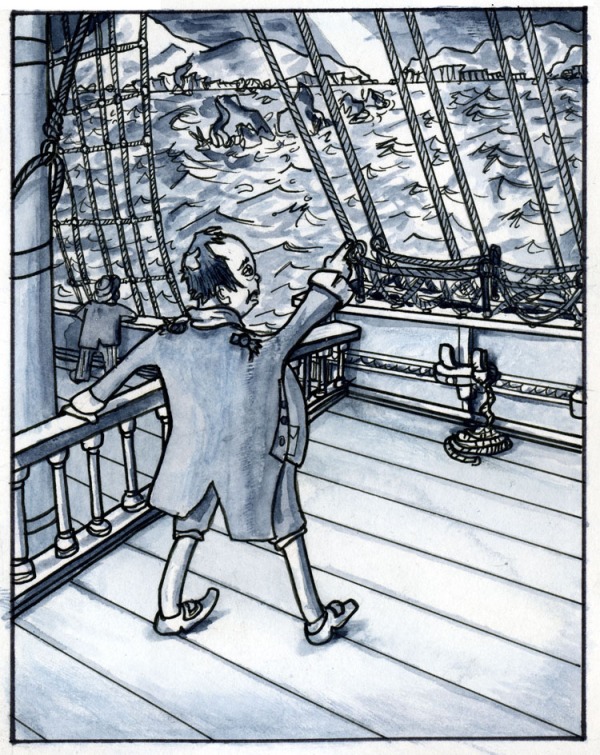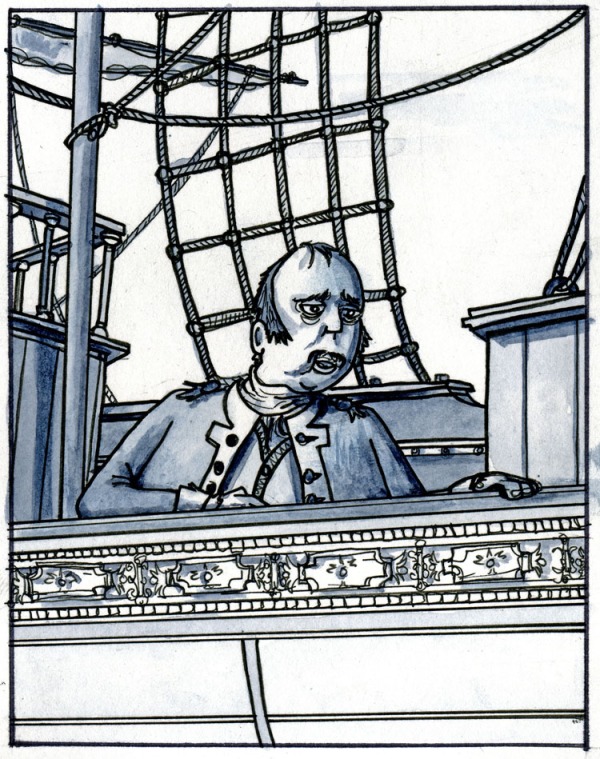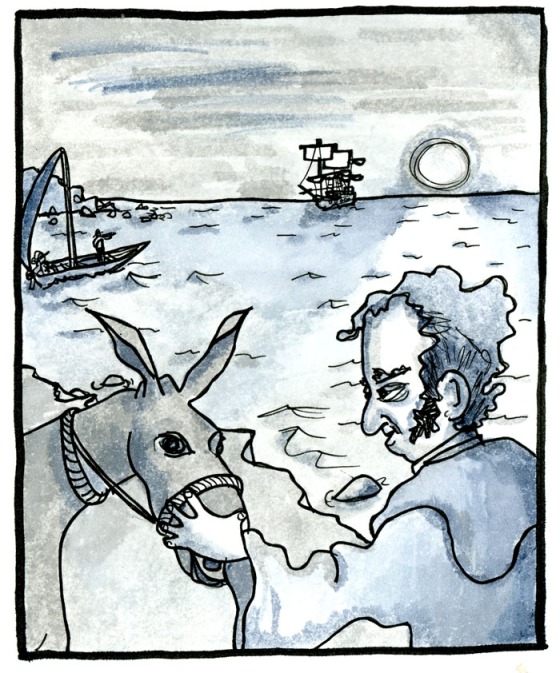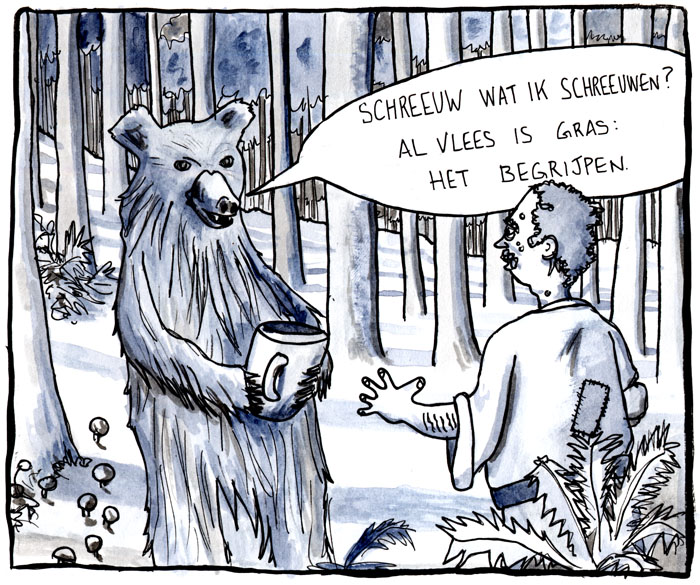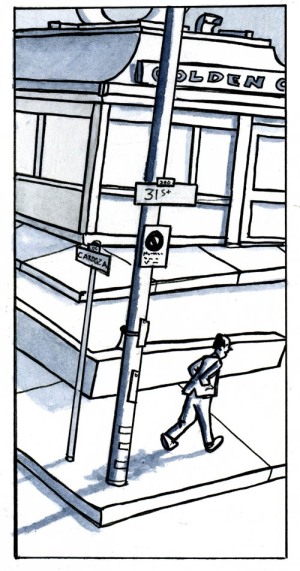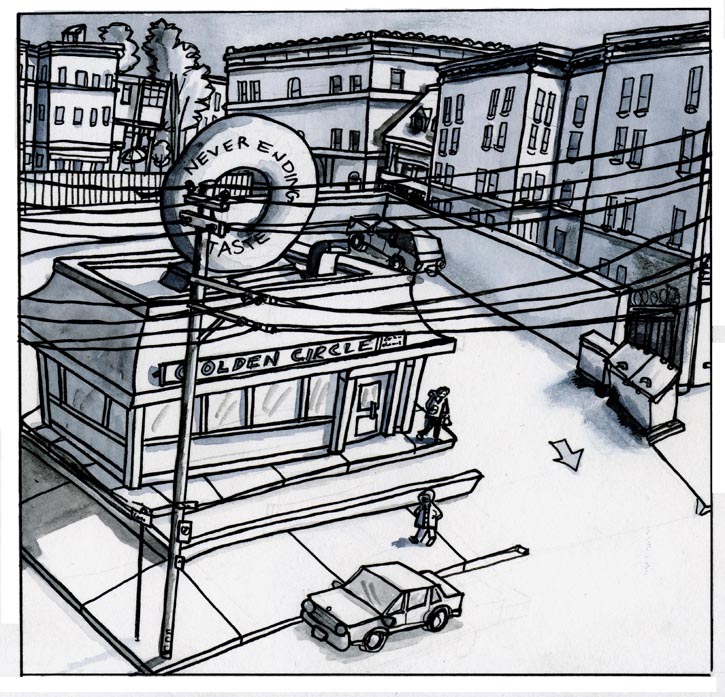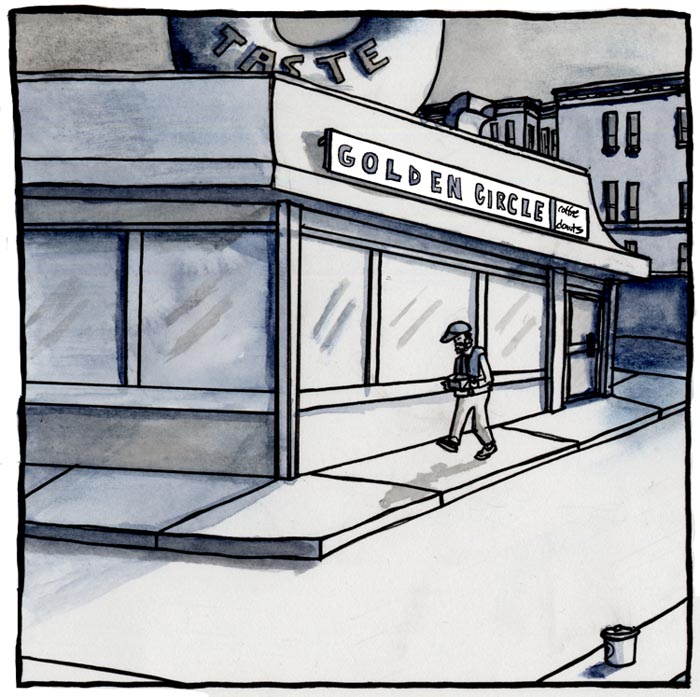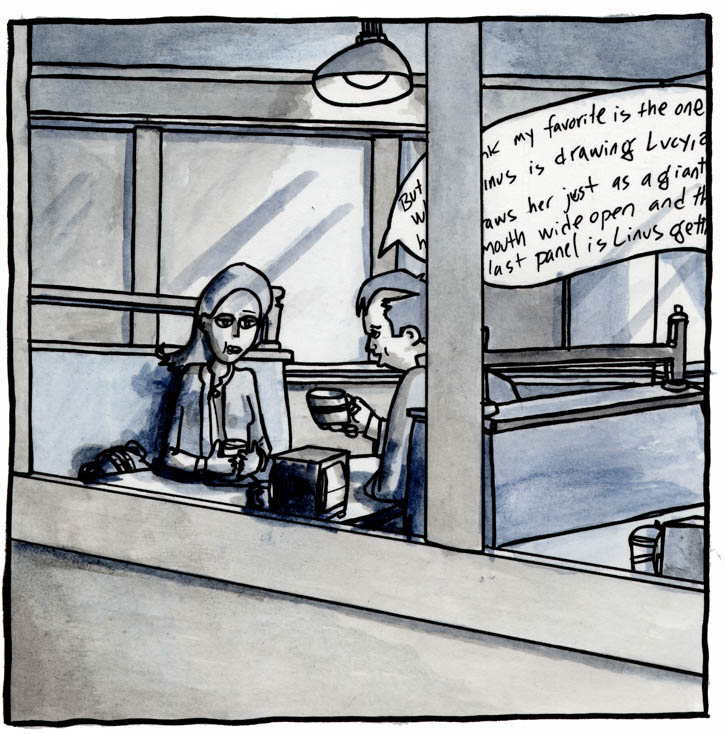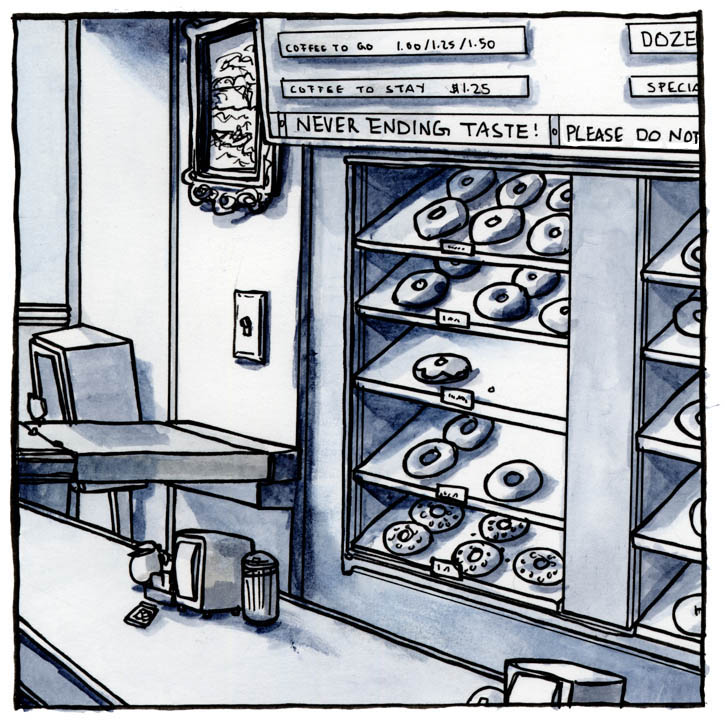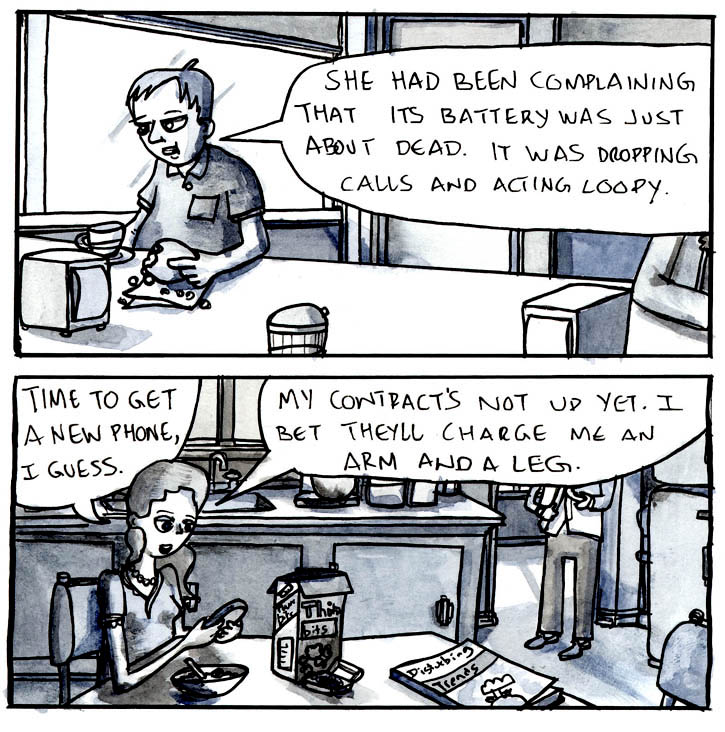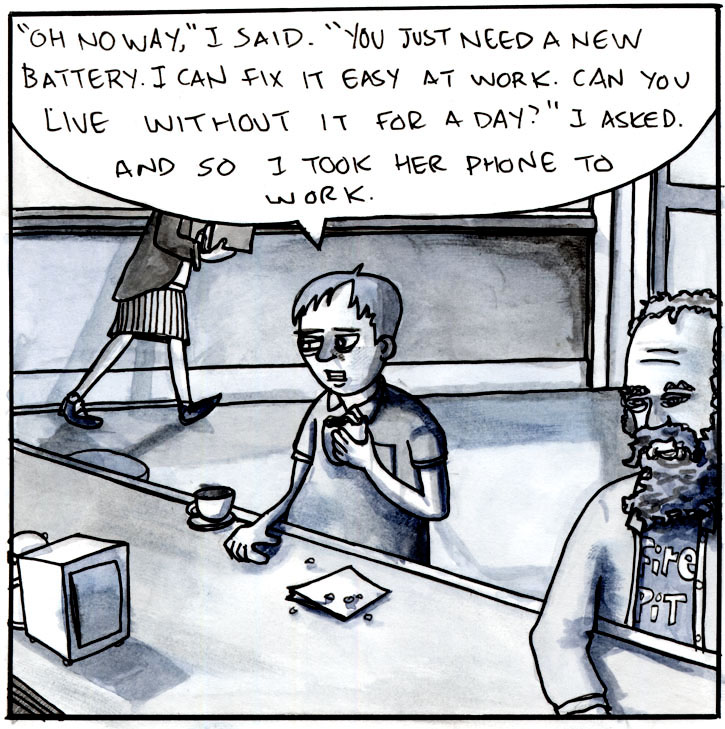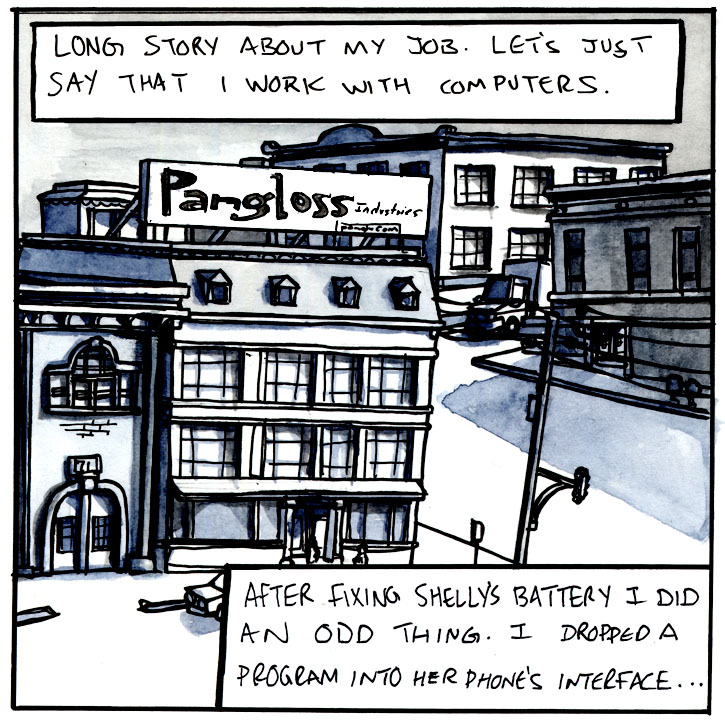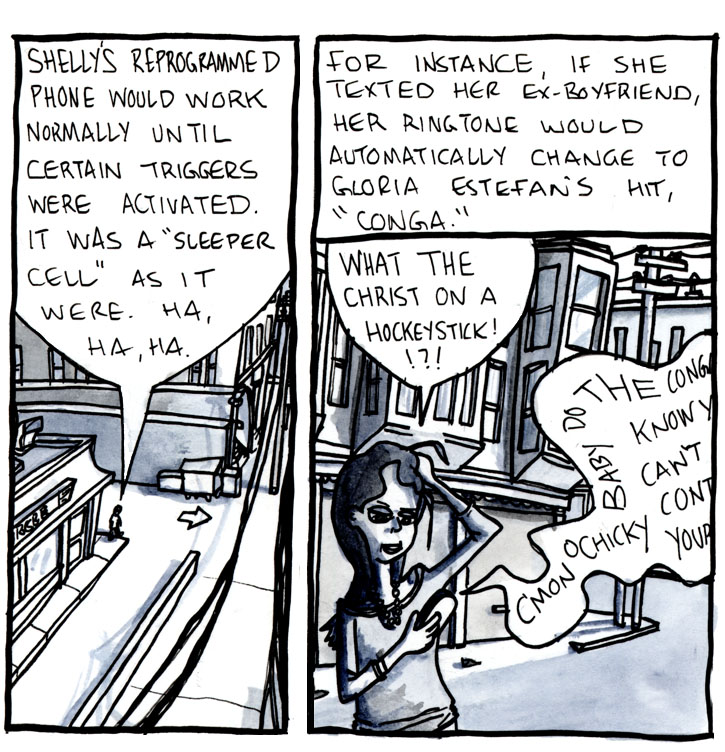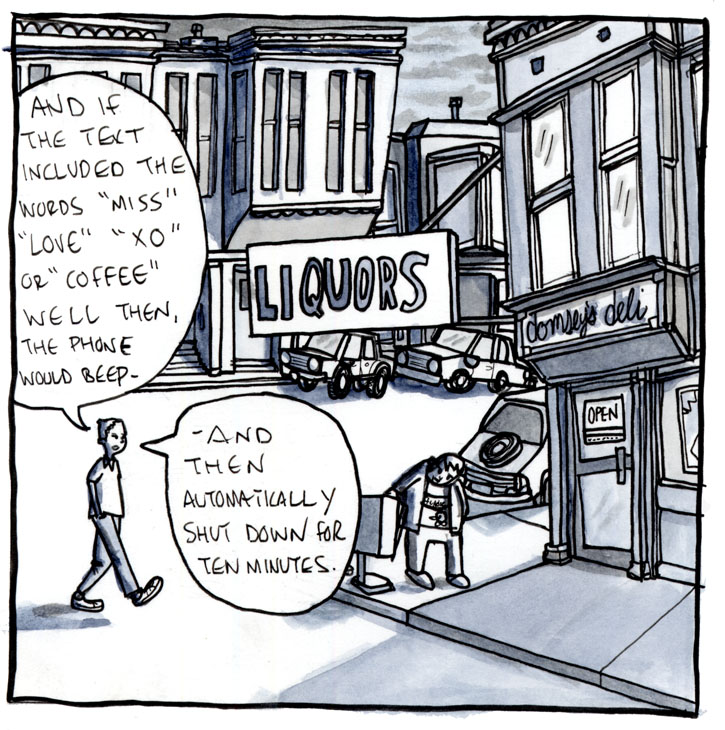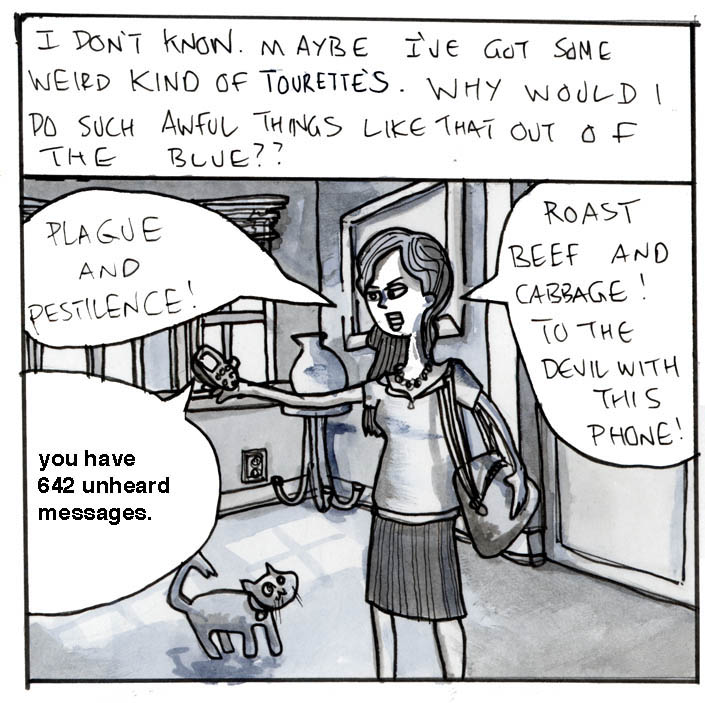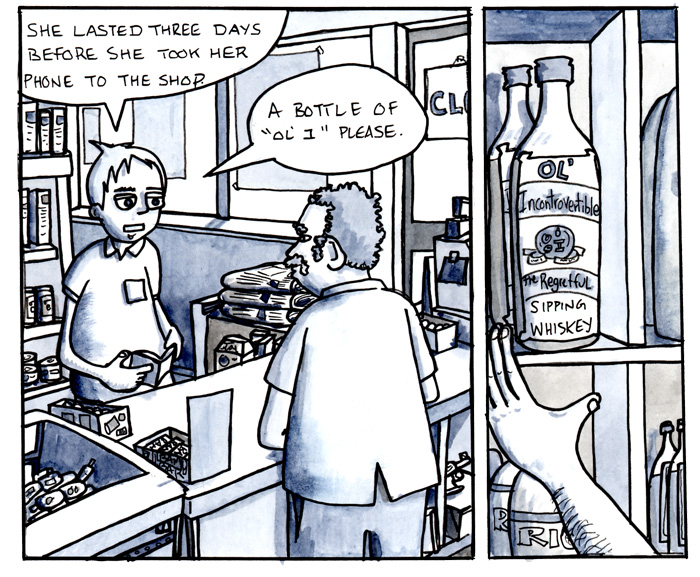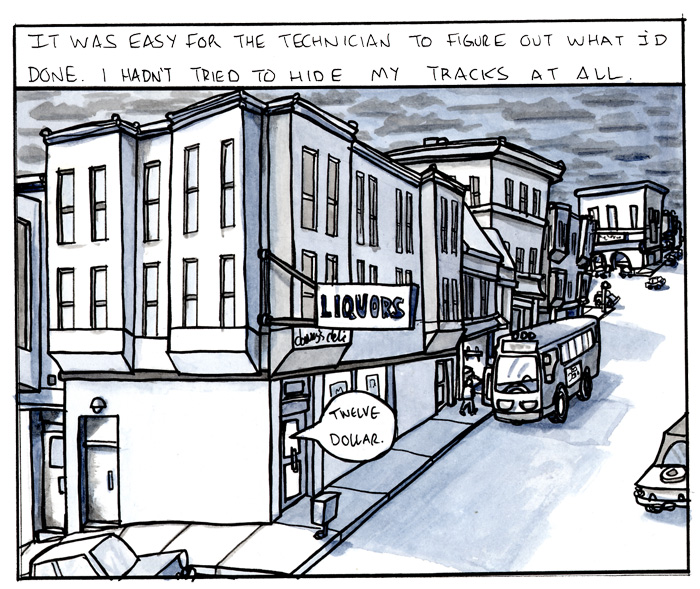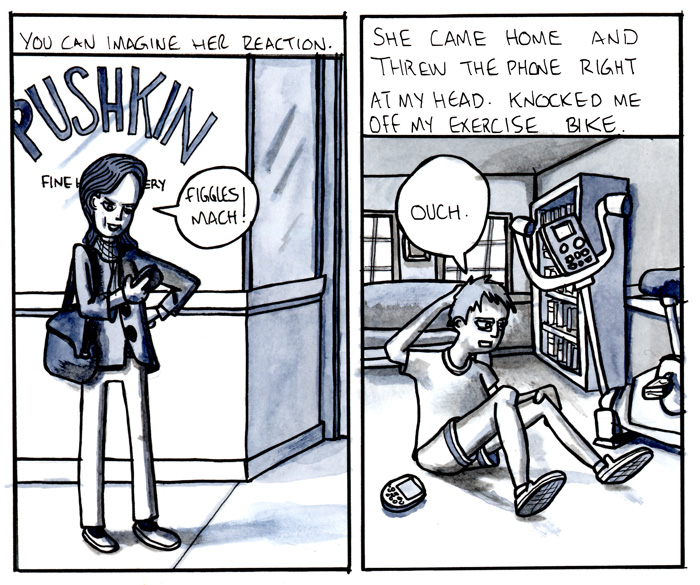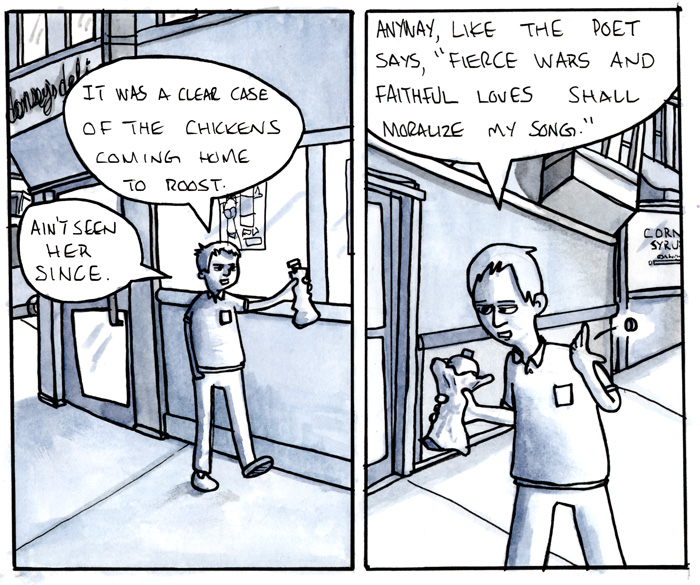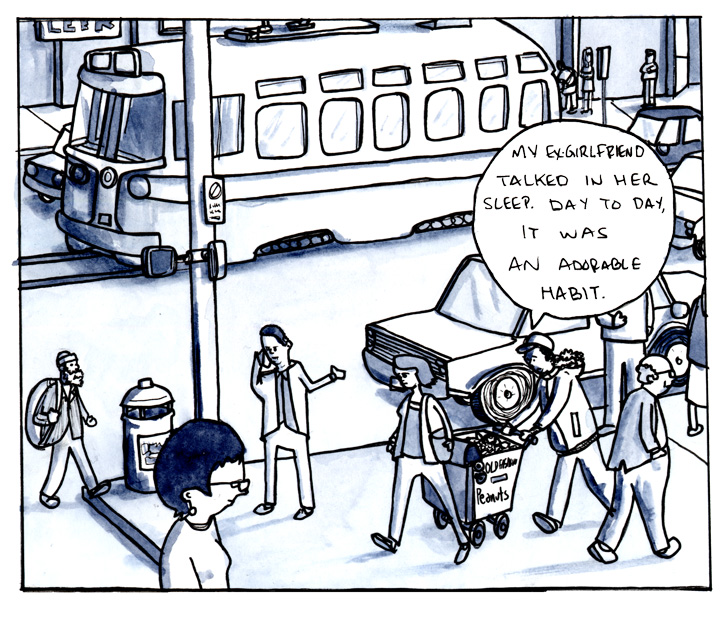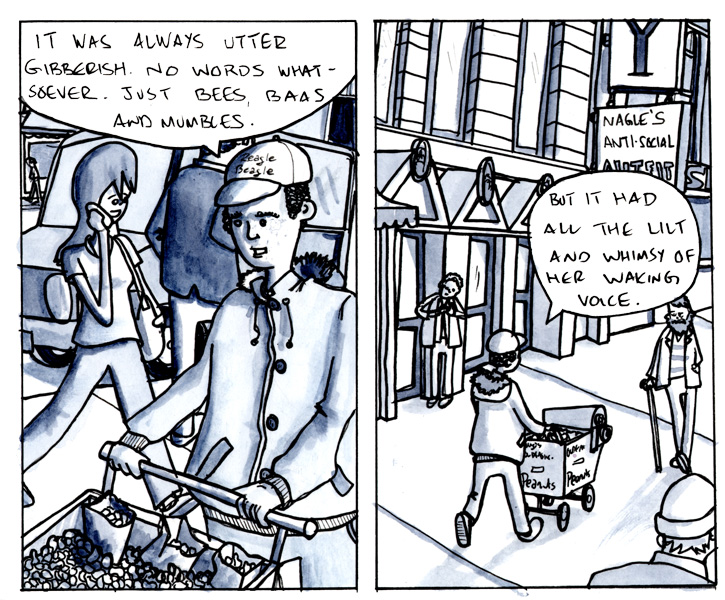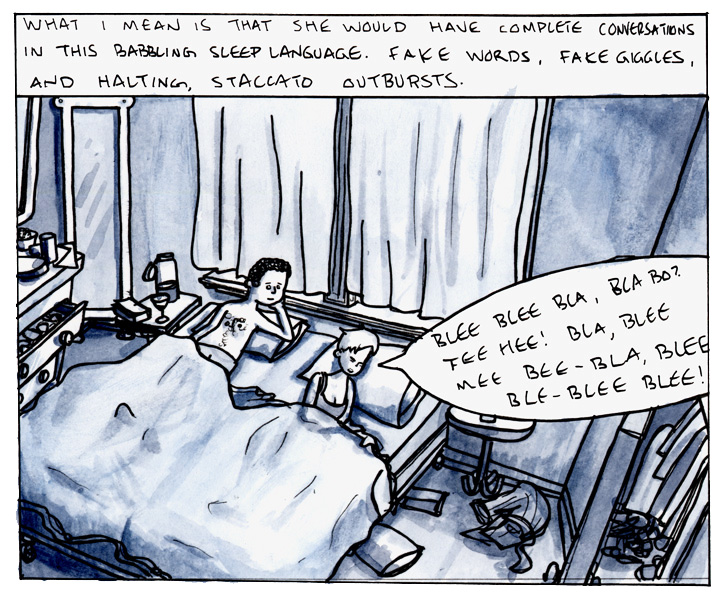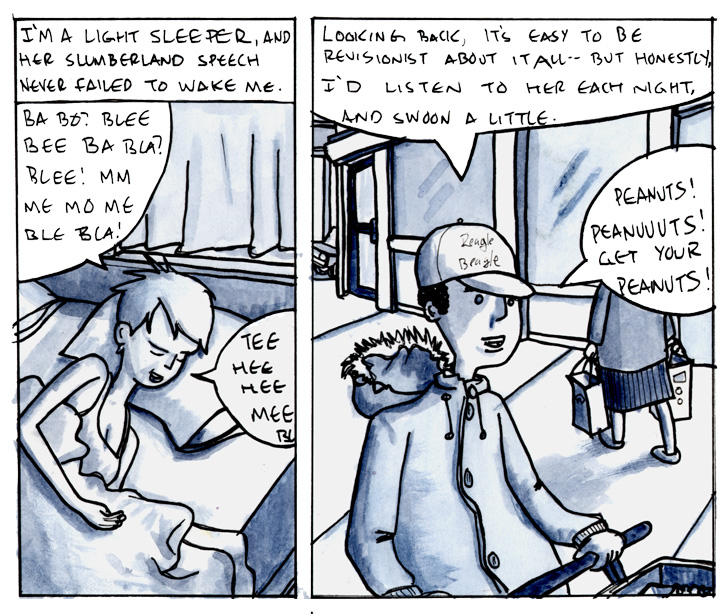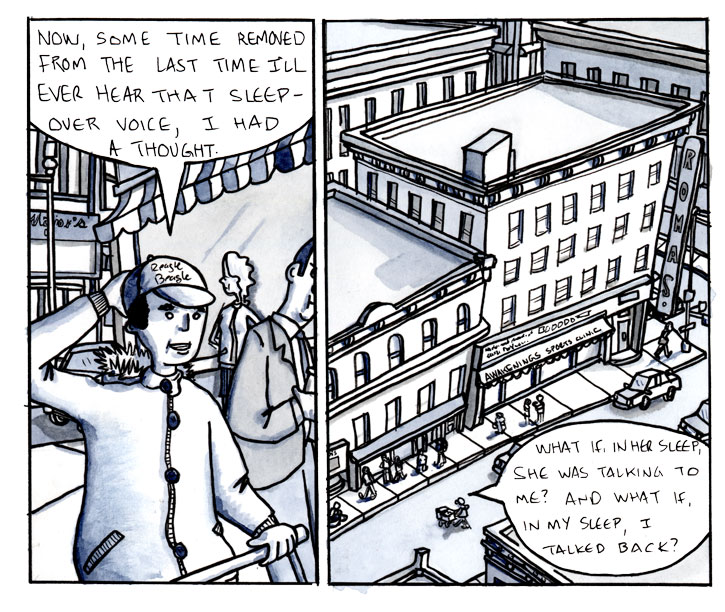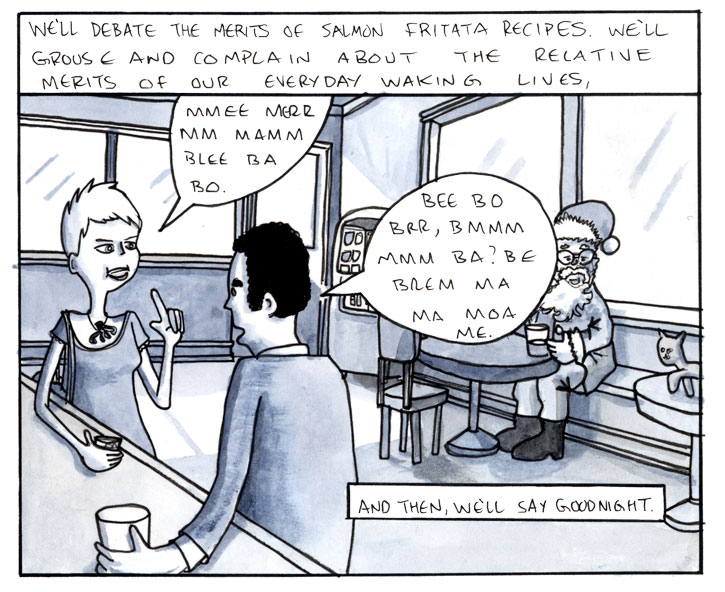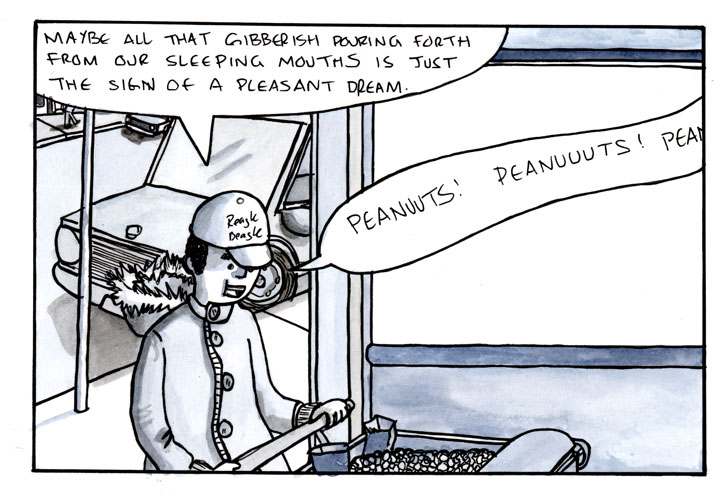Golden Circle Story Time
Stories about doughnuts
The Golden Circle Doughnut Shop: A Primer and Introduction — Part 1
According to popular history, it was during a violent South Easter in the winter of 1742 that the captain of the Spanish frigate, Aguila, discovered California’s Los Besos Bay. The Aguila had rounded the horn some 4 months previous on its way to Point Loma (present day San Diego–then the northernmost Spanish outpost along the western coast of America). The Captain, Ephrem Manuel Cardoza, had long guessed that they were disastrously north of their destination, but with little cordage, sail, and fresh water, and with a typhus-ravaged, half-starved, half-mutinous crew on his hands, all his efforts were focused on keeping the Aguila afloat. To Cardoza, the sudden, unpredictable storm that brewed up from the west seemed like it would be the final and fatal challenge for him and his ship.
As Cardoza stared into the thickening mist, a string of massive rock formations sprang up along the starboard bow. The crew began wailing; the wind and currents seemed destined to pull the ship right onto the jagged rocks. As Cardoza gauged the situation, a lone pelican took flight from the rocks. Cardoza was a man given to poetics, and something about the creature’s graceful flight in the midst of such a heavy storm caught the Captain’s attention. Despite the urgency of the moment, he took pause and followed the pelican’s trajectory. Suddenly, as the pelican wheeled to the east, a shaft of pure, golden sunlight poured through the storm clouds. The sunlight illuminated both the bird’s sea-grey plumage–and much to the captain’s delight–the narrow, but unmistakable entrance to a bay that had been overlooked in their earlier survey of the coast. Following the shaft of light, Cardoza sailed the Aguila into the bay, and thus saved his crew from the ravages of the storm.
Speaking of the rock formations which had brought the harbor to their attention, Cardoza is quoted as saying, “Those glorious pinnacles, like the kisses of a saint, heralded us to safety.” And so Cardoza called their winter refuge Los Besos del Santa.
The Golden Circle Doughnut Shop: A Primer and Introduction – Part 2
After waiting out the winter in Los Besos, Cardoza and the refitted Aguila set sail for Point Loma, leaving behind a Spanish flag and promises of friendship to the local indigenous population.
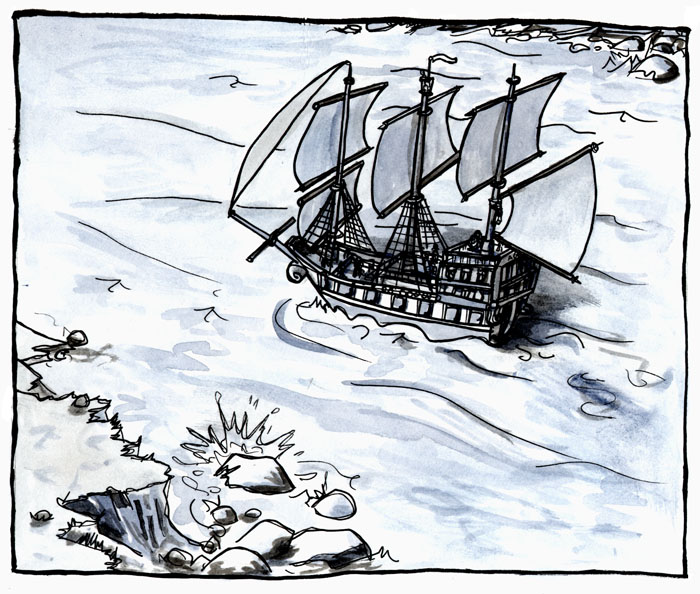
At dusk on March 11th, 1743, the Aguila sailed into the harbor of Point Loma. It was then that tragedy struck. Less than a mile from shore, a fire broke out in the munitions hold of the ship. Despite the ragged state of the rest of his supplies, the hold was surprisingly full. Cardoza was notoriously stingy with the use of gunpowder. While this no doubt endeared him to the Spanish Navy’s pursers, it proved unfortunate that evening.
The journals of Padre Hermes Espinoza, who witnessed the Aguila sail into Point Loma, called the explosion “a thing of terrible beauty. And loud. My mule was quite startled.”
Only two sailors survived the blast. And with all of the ship’s logs, official documents and charts destroyed, the exact location of Los Besos remained a mystery for another thirty years. Indeed, it wasn’t until the late 1770’s that the Spanish founded Mission Los Besos Del Santa in the heart of a thriving (for the time being) Indian community along the marshes and scrub brush of the bay’s western shore.
It should be noted that many modern historians question whether Cardoza ever entered Los Besos Bay at all. They cite a lack of archaeological evidence and various circumstantial proofs: most notably, that the treacherous currents in the bay (especially during strong winter tides) would’ve made 18th Century navigation almost impossible. Moreover, the two survivors of the Aguila explosion gave such erratic and fabulous accounts of their expedition to Los Besos that their story as a whole is circumspect (among other decidedly tall-sounding tales, they spoke of meeting a tribe of miniature Indians that lived inside acorns, and of a tame grizzly bear that spoke in Flemish and drank honey wine).
Nevertheless, some 275 years later, California possesses a city named Los Besos, located on the shores of a wide and picturesque bay, not far from the site of the former Spanish Mission. And in Los Besos, there is a somewhat neglected thoroughfare named Avenue Cardoza.
And on the corner of 31st Street and Avenue Cardoza, there is a doughnut shop called The Golden Circle.
The Golden Circle Doughnut Shop — A Primer and Introduction — Part 3
For the purposes of many of the stories that will unfold in this forum, there is very little that the casual reader will need to know about the Golden Circle, beyond its aforementioned location. However, here at the outset, it might interest the completist to gather a more comprehensive picture of the establishment.
The Golden Circle began its life in an earlier era, when certain rococo tendencies in fast food architecture were still in their prime. Hence, atop its slanted red roof, there sits a ceramic honey-colored doughnut, about the size of a Volkswagen Bug. The words “NEVERENDING TASTE” follow the circumference of the doughnut around its edge, and below it, along the rim of the roof, a sign spells out “GOLDEN CIRCLE,” followed by “Coffee,” and “Donuts.”
The present owners of the Golden Circle are fanatical about its upkeep. The entirety of the shop, especially on a foggy night (which is six nights out of seven) seems to glow with a warm, Edward Hopper radiance. Each of its clean windows showcases a comfortable leather booth and a red linoleum table, each with their own bronze ceiling lamp shining out a soft yellow light. Every table has its own napkin dispenser, dairy creamer, and sugar dispenser, as well as a cream colored ramekin stuffed with a tidy selection of white packets of sugar and pink packets of sugar substitute.
The shop’s counter matches the red of the tables with an equally rich green linoleum and a similar assortment of utensils and accoutrement.
The menu, back lit with a steady white light, reads clean and simple along the top of the kitchen’s wall. Doughnut prices, coffee prices, and a tiny selection of other beverages, plus one rotating weekday breakfast special from the grill (Monday: Scrambled eggs on an English muffin, Tuesday: Huevos Rancheros, etc). The doughnuts themselves sit in clean, neatly labeled shelves. Unlike most 21st Century doughnut shops, The Golden Circle’s coffee is exceptionally good, and bottomless for eat-in customers.
The most distinguishing quirk of the eatery is evident to anyone who reads the menu: each doughnut variety is named for a saint. Saint Ursula’s Eleven Thousand Sprinkles, Saint Brendan’s Pumpkin Spiced, Don Bosco’s Chocolate Glazed, Saint Anthony’s Jelly-filled, St. Brigid’s Bearclaws. If you were to ask the counter help about this unusual naming practice, she (invariably, it is almost always a she) will smile and point to a message along the bottom of the menu that reads: “Please do not ask us about the Saints. Thank you, Mgt.”
Thesis Part 1
On the sort of day when a hot cup of coffee actually means something, we return to the Golden Circle…
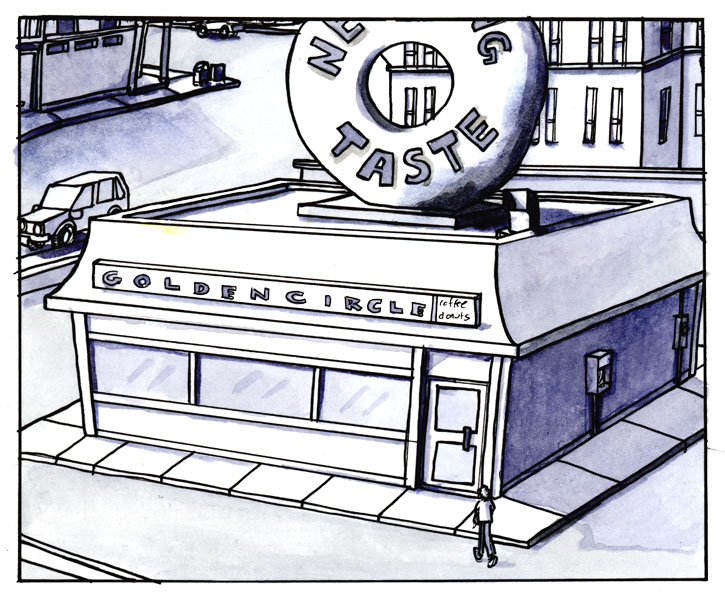
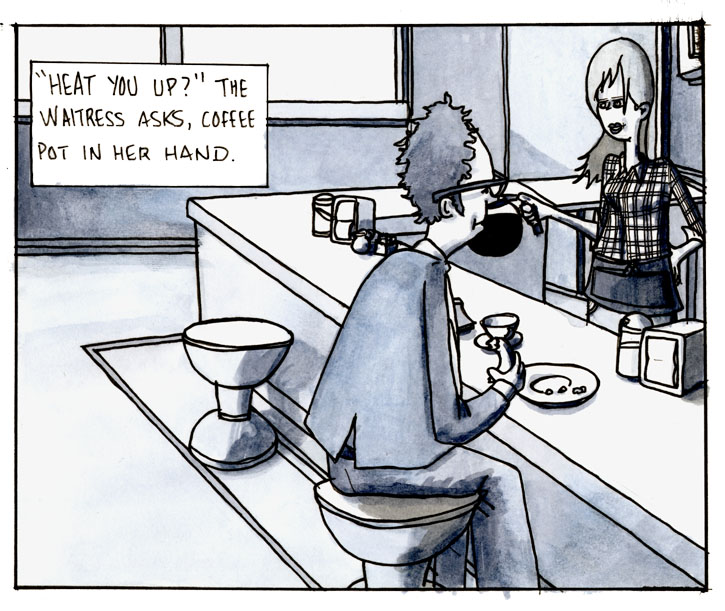


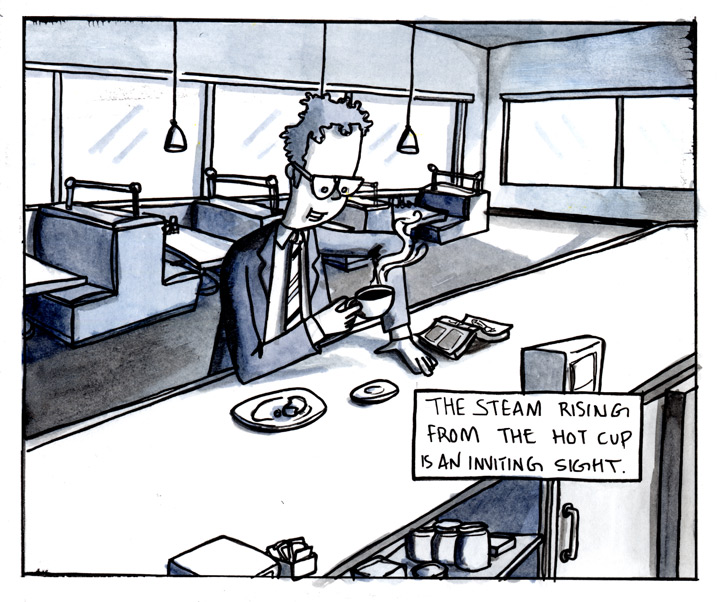
Continued soon…
-
Recent Chapters
- The Golden Circle Doughnut Shop: A Primer and Introduction — Part 1
- The Golden Circle Doughnut Shop: A Primer and Introduction – Part 2
- The Golden Circle Doughnut Shop — A Primer and Introduction — Part 3
- A Later Afternoon Confession — Part 1
- A Late Afternoon Confession — Part 2
- A Late Afternoon Confession — Part 3
- A Late Afternoon Confession — Part 4
- Peanuts! Part 1
- Peanuts! Part 2
- Thesis Part 1
- Thesis Part 2
- Thesis Part 3
- Thesis Part 4
- Thesis Part 5
- Thesis Part 6
Archives
art and design
Blogroll
comics
retail
Pages
April 2024 S M T W T F S 1 2 3 4 5 6 7 8 9 10 11 12 13 14 15 16 17 18 19 20 21 22 23 24 25 26 27 28 29 30 Meta

